Things You Can Only do in France During the Christmas Season
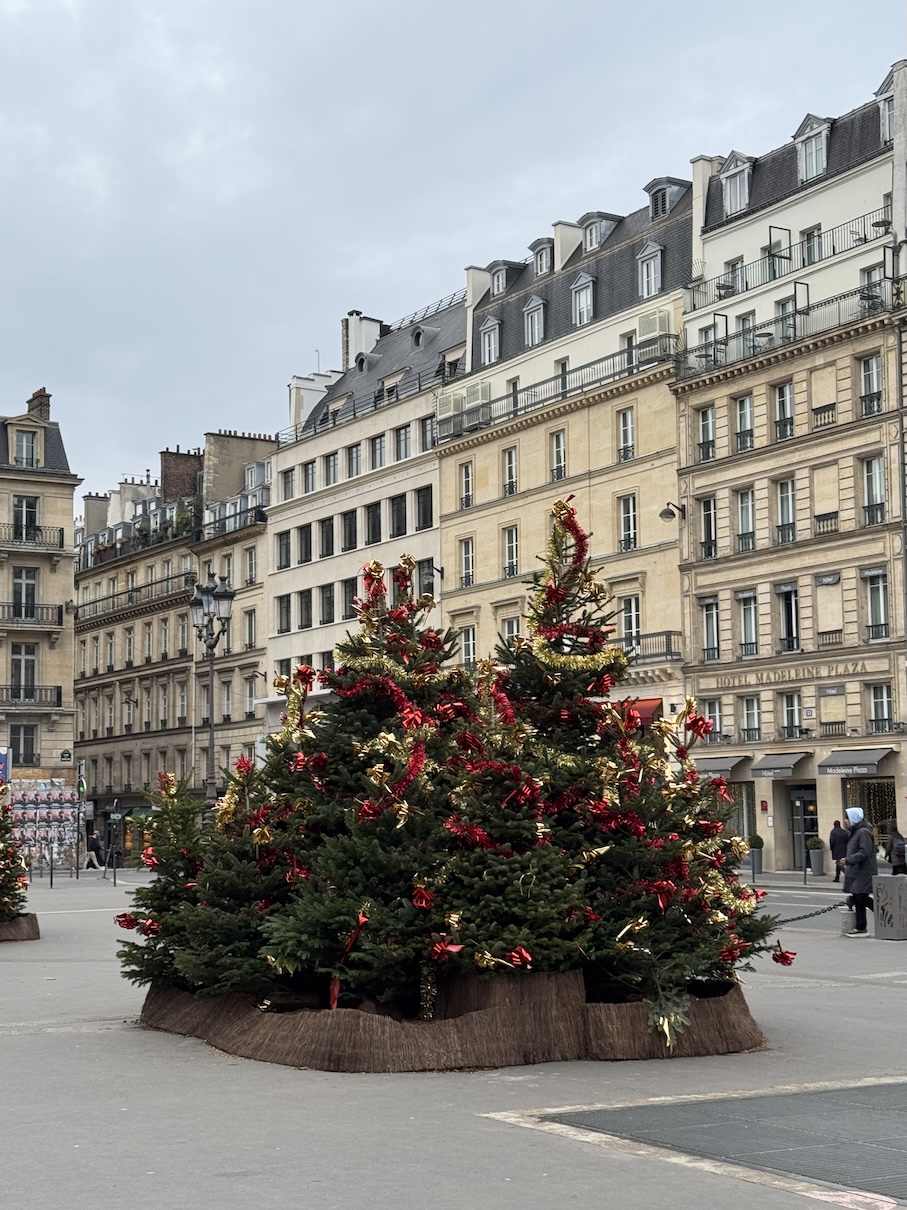
Christmas is always such a special time. There’s something in the air that lifts our spirits and brings joy into our lives, even as the days grow colder. But spending the holiday season in France adds an extra layer of magic that’s hard to describe, it’s a blend of tradition, charm, and festive beauty.
France is the perfect place to visit around this time of year. The country comes alive with twinkling lights, festive markets, and centuries-old traditions that make the season unforgettable.
What’s even better?
*As an Amazon Associate I earn from qualifying purchases.
Best Time to Visit for the Holidays
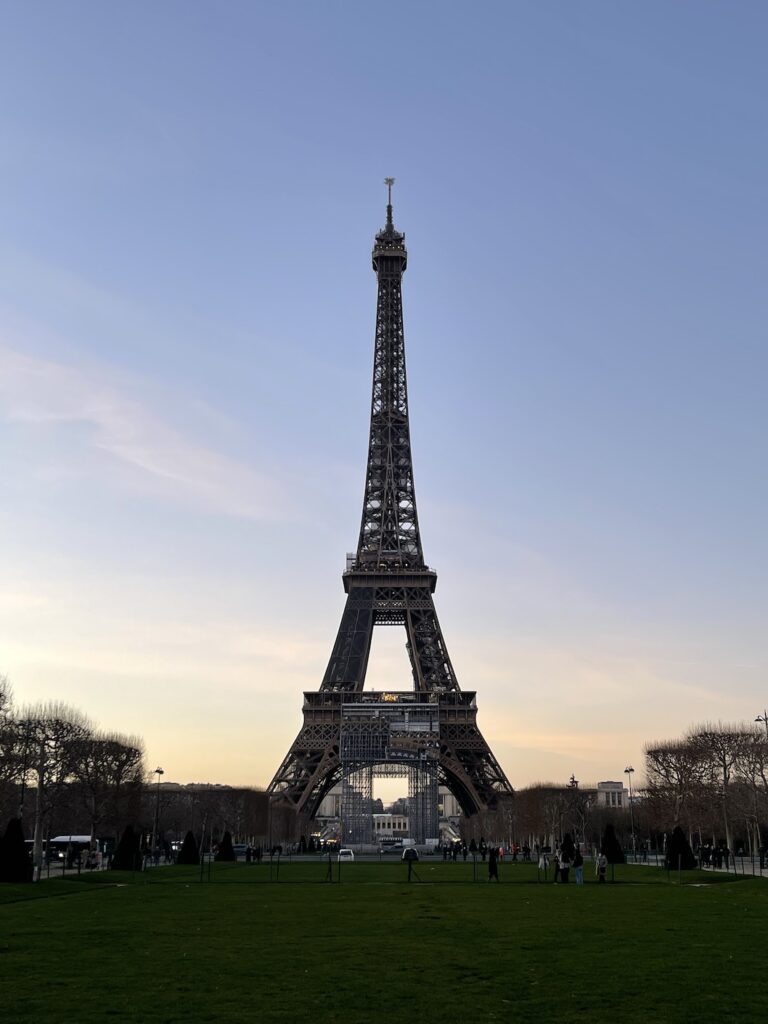
The Christmas festivities in France begin in early December and often continue into January. So even if you’re not able to visit exactly on Christmas Day, there’s still plenty of opportunity to take in the spirit of the season, before or after the 25th.
Below is a list of all the traditions, festivities, and foods worth trying when spending Christmas in France.
French Christmas Traditions
Christmas Masses
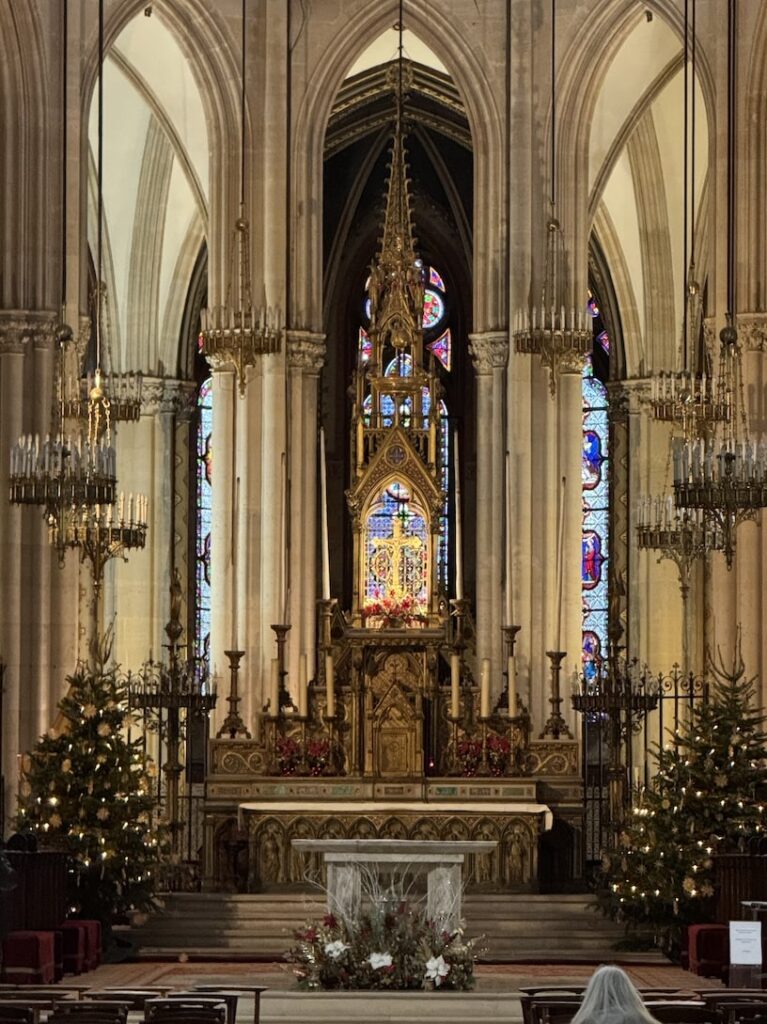
Throughout the country, nearly every Catholic church is beautifully decorated for the Christmas season, which officially begins in early December with Advent. These festive decorations typically remain in place at least until Epiphany in early January—another important celebration in the French calendar, rich with its own unique customs and traditions (which we’ll explore in another post).
Interestingly, the official tradition in France is to keep Christmas decorations up until Candlemas on February 2nd, a lesser-known but charming feast day celebrated with the joyful tradition of eating crêpes.
During Advent and the Christmas season, churches across France display nativity scenes, and they are truly some of the most beautiful I’ve ever seen. Some of these displays feature intricate scenes that not only depict the Holy Family, but also include an entire village surrounding them, complete with shepherds, farmers, and townspeople going about their daily lives.In some places, I’ve even come across life-sized, realistic representations of the Holy Family and the manger, bringing the story of Christmas to life in a moving way.
Midnight Mass in France is a big deal and it really is celebrated at midnight. Before Mass begins, many churches host the singing of Christmas carols, which is always a beautiful way to ease into the celebration.
I don’t know if it’s just me, but it feels like French Catholics can all sing. If you’ve ever had the privilege of hearing an entire parish sing a prayer together, it’s truly something special. Without any formal rehearsal, the harmonies just seem to fall into place. The natural polyphony is rich and moving, and hearing it in person is an experience I’d recommend to anyone.
Christmas Skits
Another great tradition that I absolutely love are the skits put on by traditional abbeys and priests. This probably stems from their time growing up in Scouts (think Boy Scouts, but better), and it’s especially common among traditional French priests, even those serving abroad in places like the United States.
These skits are always well thought out and entertaining, filled with that clever French humor, usually dry, a bit sarcastic, but never offensive. There’s a certain wit and charm to them, and they’ve become something I really look forward to each year.
Traditional French Winter Dishes
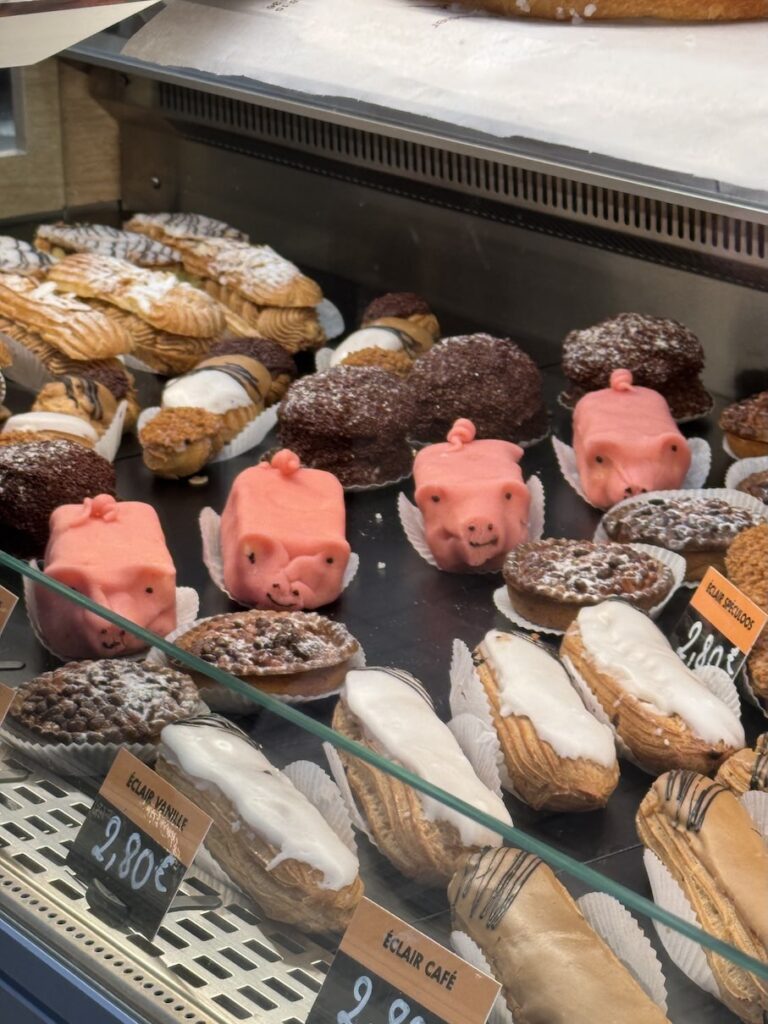
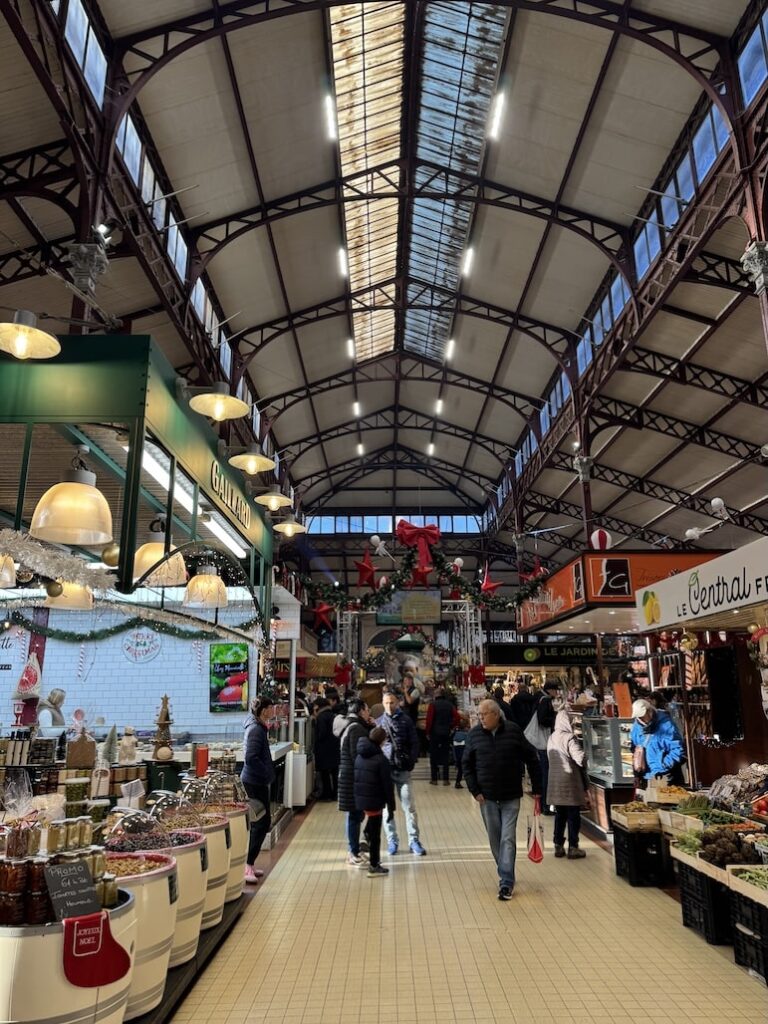
As with most countries, food is a big deal, but with the French and their deep love for all things culinary, you can imagine just how delicious their holiday food is. The dishes served often vary by region, reflecting local ingredients and traditions.
However, there are some classic French dishes that tend to make an appearance everywhere and more often during the holiday season. You can often spot them easily as stores are suddenly filled with these items and all their delicious variations
Appetizers
Foie Gras
For instance, it is around this time of year that foie gras is most often served. Stores are lined with foie gras and you can find them in a can or in the refrigerator section.
This dish is typically served as an appetizer and is often enjoyed on slices of traditional baguette or pain d’épices, a spiced and slightly sweet honey bread that pairs well with rich flavors. It’s common to serve it with condiments, and my personal favorites are fig jam and confit d’oignon (onion jam), which add just the right balance of sweetness and texture.
Pâté en Croûte
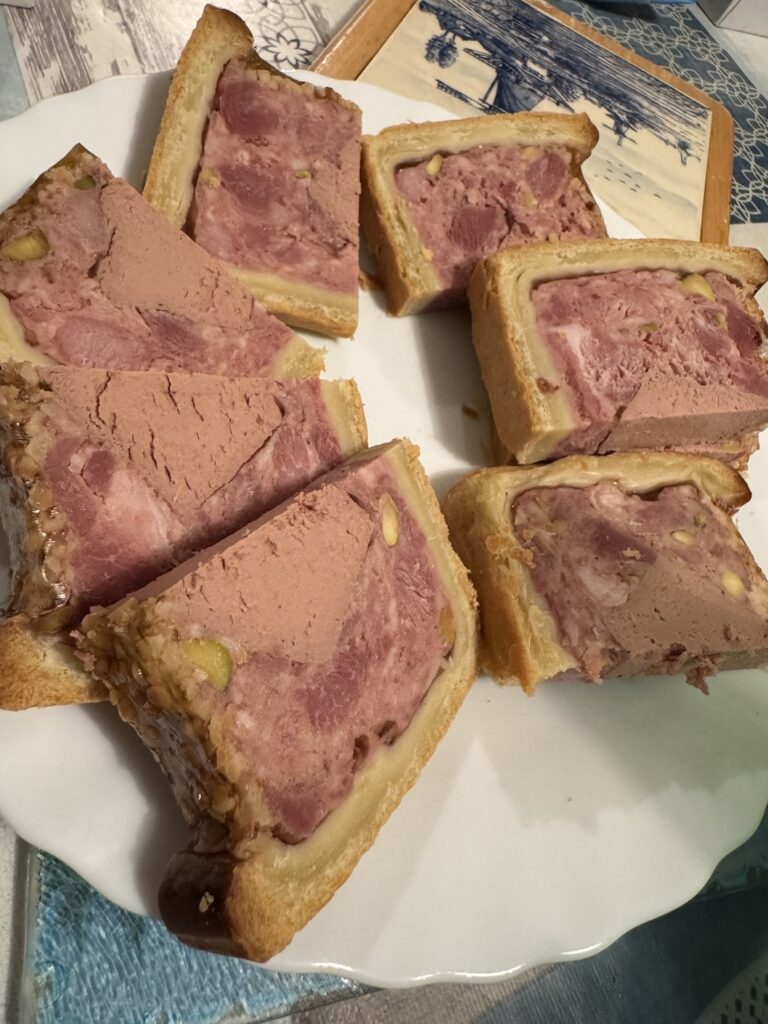
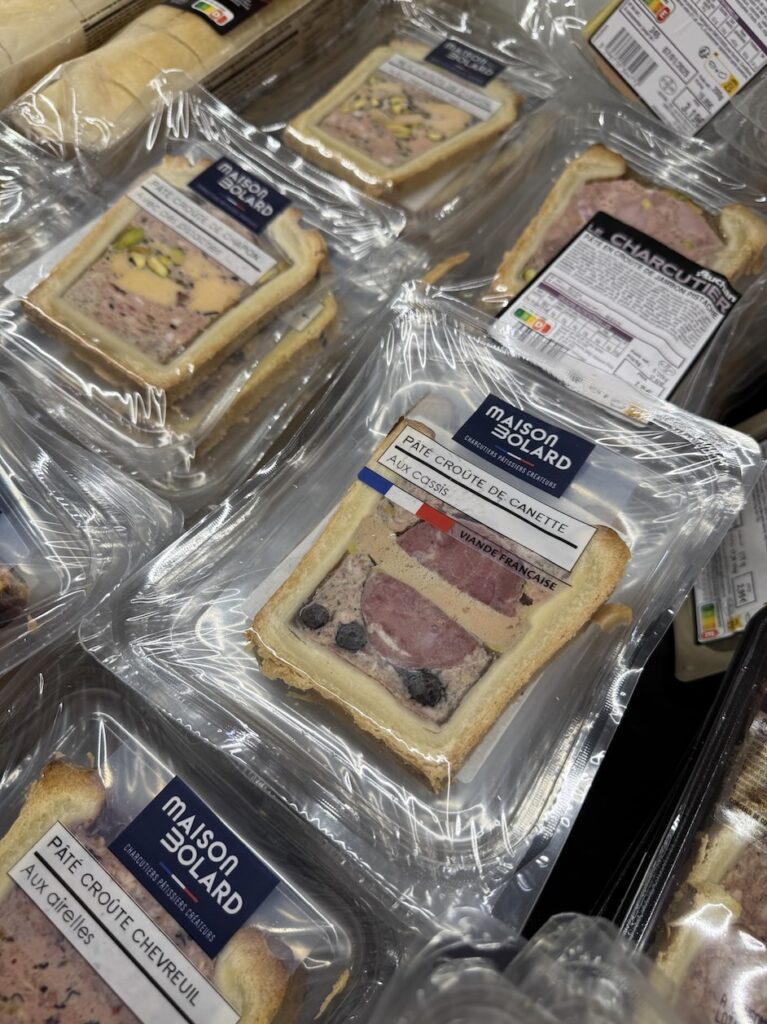
Another popular appetizer during this time is the pâté en croûte. That is a pâtc or terrine wrapped in delicate puff pastry. It’s one of my favorite French dishes, and during the winter months, you’ll often find entire refrigerated sections dedicated to all kinds of pâté en croûte.
You can also buy locally made versions at the French equivalent of a deli counter in larger supermarkets or directly from a local butcher shop, where they’re often handmade and incredibly flavorful.
Entrées/Main Course
Traditional French meals during the winter are usually hearty and warming. They often feature plenty of melted cheese, braised meats, and rich stews that help you stay cozy in the cold weather.
Raclette
One dish that immediately comes to mind is raclette, which although originated from Switzerland, is especially popular in France after a full day of skiing or other snow activities. The cheese is cooked under an electric grill, then scraped onto a plate over various cold cuts, vegetables, and bread. It’s a calorie-dense and comforting meal, perfect for refueling after a day out on the slopes.
Cassoulet
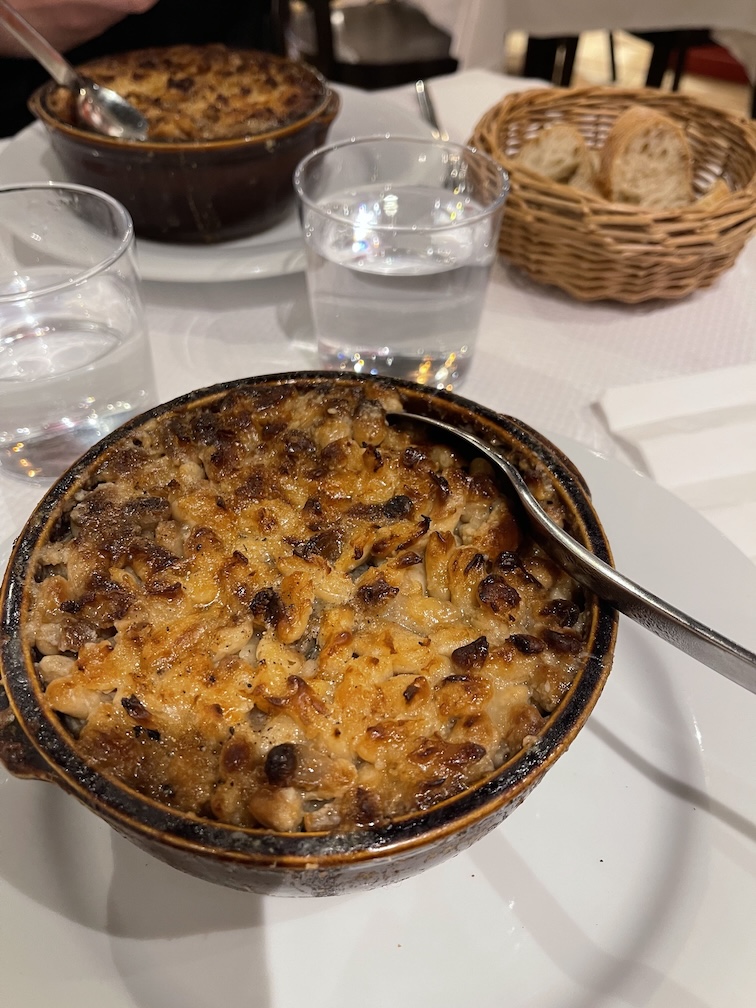
Another winter dish, and one of my all time favorite French dishes, is cassoulet. It’s a hearty bean and meat stew, usually slow-cooked in a clay pot for hours. This long cooking time allows the beans to become incredibly soft and creamy, while the meats are fall-off-the bone tender and flavorful.
A natural crust forms on top from the rich cuts of meat being braised for so long. I assume that is from the extraction of all the collagen from the bones. I’m not a fan of recipes that tell you to add a breadcrumb layer on top, that’s usually a sign that it is not an authentic cassoulet.
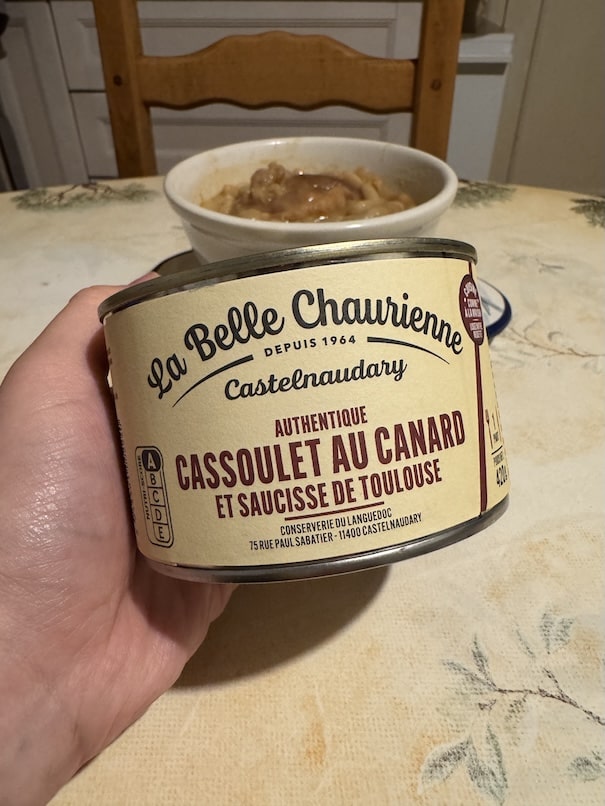
Cassoulet is definitely a labor of love. It takes time and effort, but for me, it’s completely worth it. I once made this dish myself, but then the only butcher shop where I could find Toulouse sausage and duck confit closed down. Now I’m on a mission to make those from scratch, stay tuned for that adventure!
If you’re in France, especially in the south where cassoulet originates, you’ll easily find restaurants serving it. Around this time of year, grocery stores also stock various brands and versions of cassoulet, which I find to be an economical and delicious option. I highly recommend choosing a brand that includes both duck confit and Toulouse sausages—those are non-negotiables for me. My favorite brand is the one in the photo.
Fondue Bourguignonne
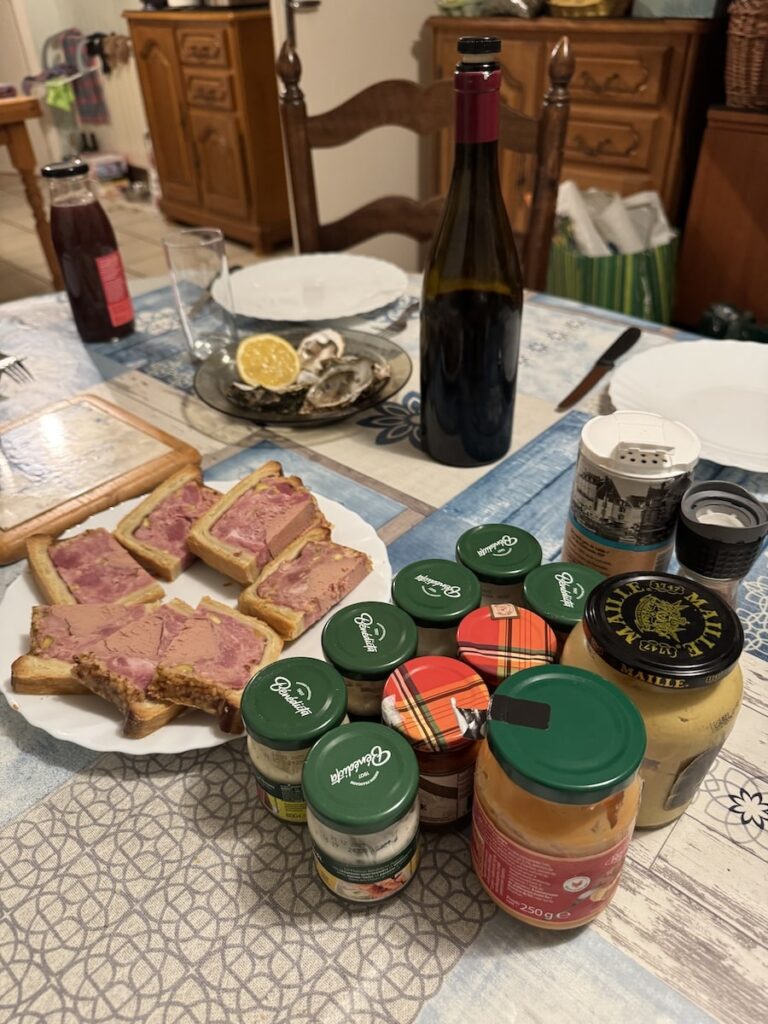
A fun dish to enjoy with family during the holidays is oil fondue, known by its French name as fondue bourguignonne. It’s exactly what you’d imagine if you think of cheese fondue, but instead of melted cheese, you have a pot of hot oil.
For this dish, you typically skewer raw meat or seafood and cook it right in the oil. Common sides include steamed vegetables like broccoli, carrots, and potatoes, which complement the proteins perfectly.
The real highlight, though, is the variety of French sauces you can dip everything into. You can mix and match or stick to a favorite. During the holiday season, stores often sell sauce kits that include several different flavors, making it super convenient—and a lot of fun to try them all.My favorite is the poivre (pepper) sauce, which has a nice savory kick, while my husband prefers the béarnaise, a tangy, buttery sauce.
If you plan to recreate this meal back in the U.S., I suggest buying the sauces in France, they’re usually about a fifth of the price compared to here. They make a wonderful and practical souvenir, just like many of the other items on this list. You can also make the sauces at home, but I often don’t have the ingredients on hand, so I usually order them from Amazon here and here.
Desserts
Bûche de Noël
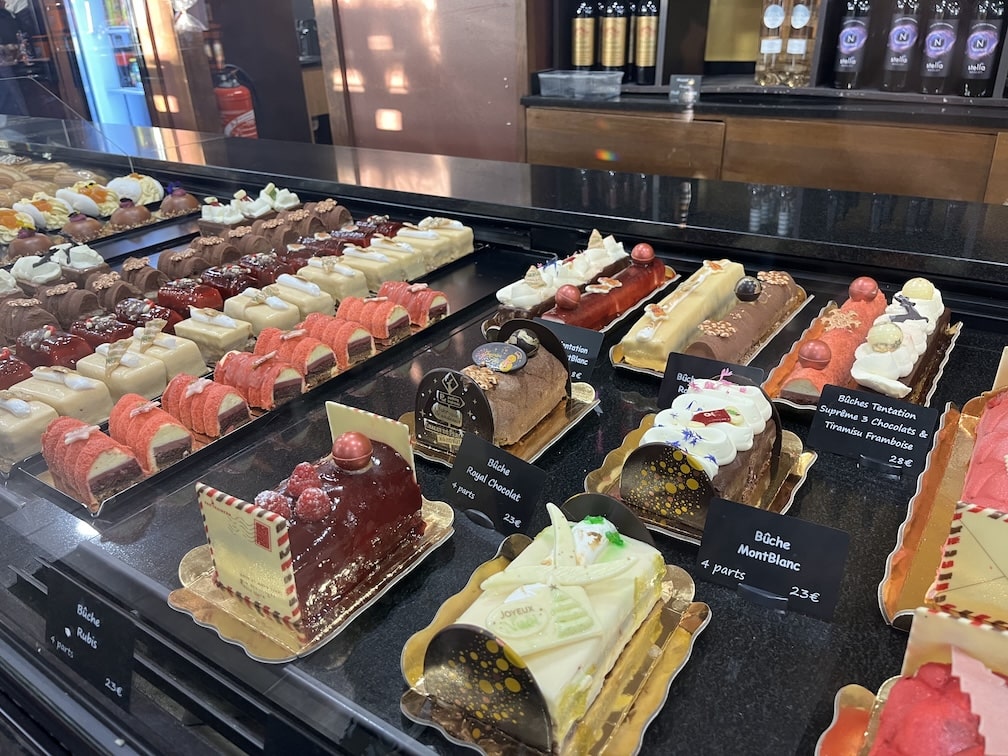
One of the best places to be in France is a French bakery, and during the holiday season, they’re filled with even more delicious pastries and breads than usual. A classic dessert you’ll only find at this time of year is the bûche de Noël, also known as the yule log.
In the U.S., we’re used to the chocolate swirl cake shaped like a log, though to be honest, I’ve never actually seen one in person. In France, however, bûches come in all shapes, sizes, and flavors. You can find huge ones the size of a full cake, or smaller individual-sized logs, which are perfect for sampling different flavors. They’re available not only at bakeries but also in grocery stores, and you can even find ice cream and sorbet versions.
Galette des Rois
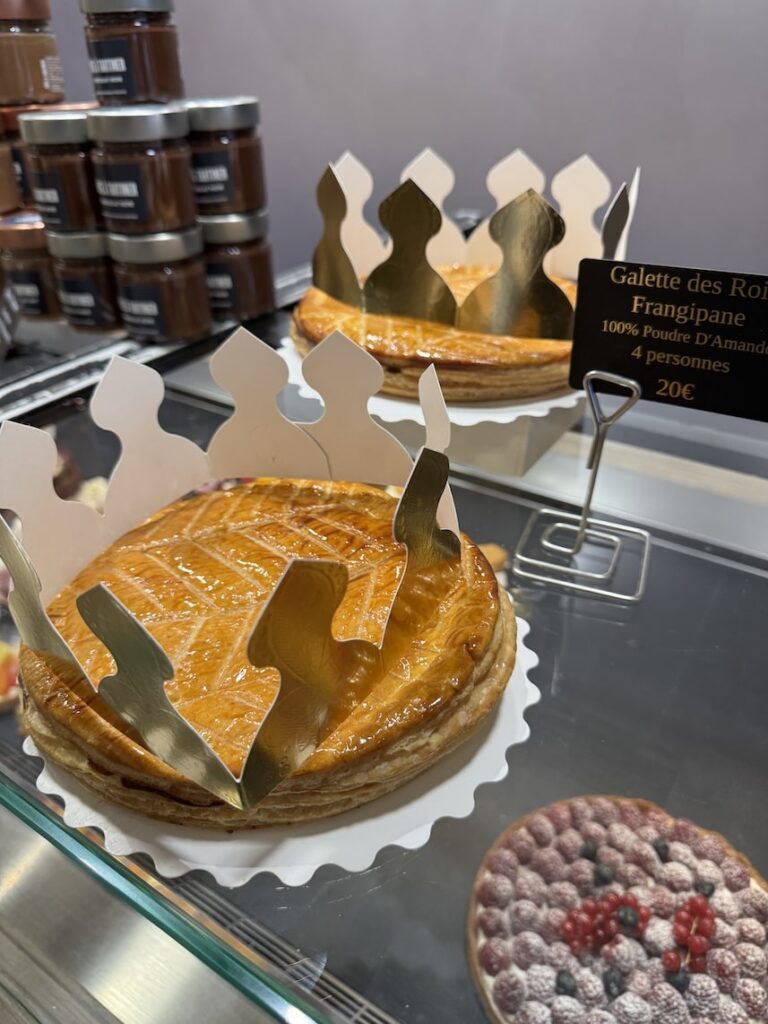
Starting just after Christmas, you’ll begin to see a special puff pastry dessert called the Galette des Rois. It’s a French tradition to enjoy this treat around Epiphany, which takes place on January 6th. There are many customs surrounding how to eat this pastry, but as mentioned earlier, we’ll dive into those in a dedicated post soon.
The classic galette is filled with almond cream and wrapped in flaky puff pastry, though nowadays bakeries offer all kinds of variations, from fruity to chocolate-filled versions. I’ve tried making it myself at home, and while it wasn’t bad, nothing compares to the ones from the bakery.
I absolutely love this dessert and always feel a little sad that it’s only available once a year. Luckily, we’ve found bakeries in the United States that make wonderful galettes when we can’t make it back to France during the season, though be prepared to pay quite a bit for the privilege!
Chocolat Chaud
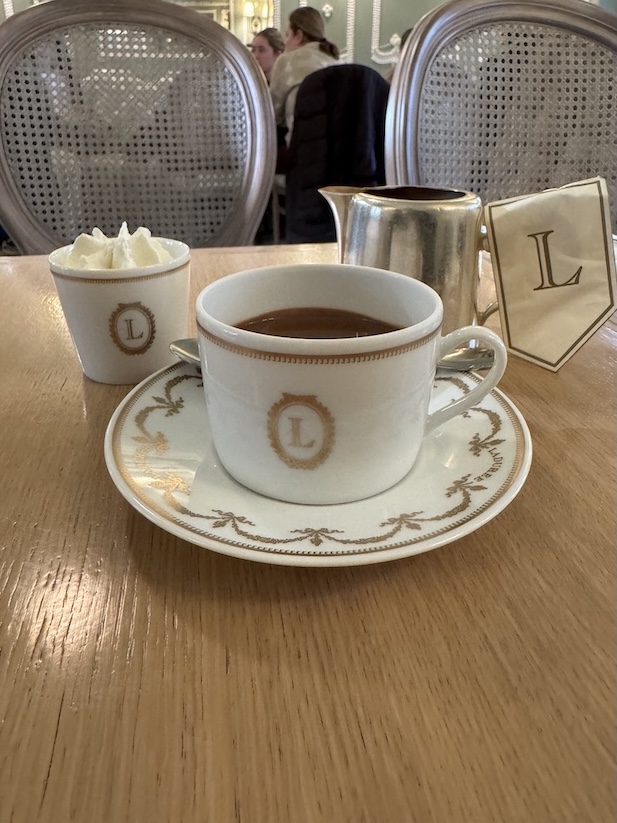
The last dessert I’d recommend trying during your winter trip to France is chocolat chaud, or French hot chocolate. While you can find it year-round in certain shops, it’s especially popular during the colder months.
For me, chocolat chaud was love at first sip. I tried it one winter from a random bakery we happened to walk past, and I was instantly hooked. It’s rich, creamy, and decadently smooth.
I much prefer French hot chocolate over the versions you find in the United States because it’s usually made with dark chocolate, which I love.
We sampled French hot chocolate from many shops around Paris. We shared our favorites in a post and even created a copycat recipe so you can make it at home. The key is using good-quality dark chocolate, which we recommend purchasing in bulk from France to bring back as a delicious souvenir.
Christmas Markets
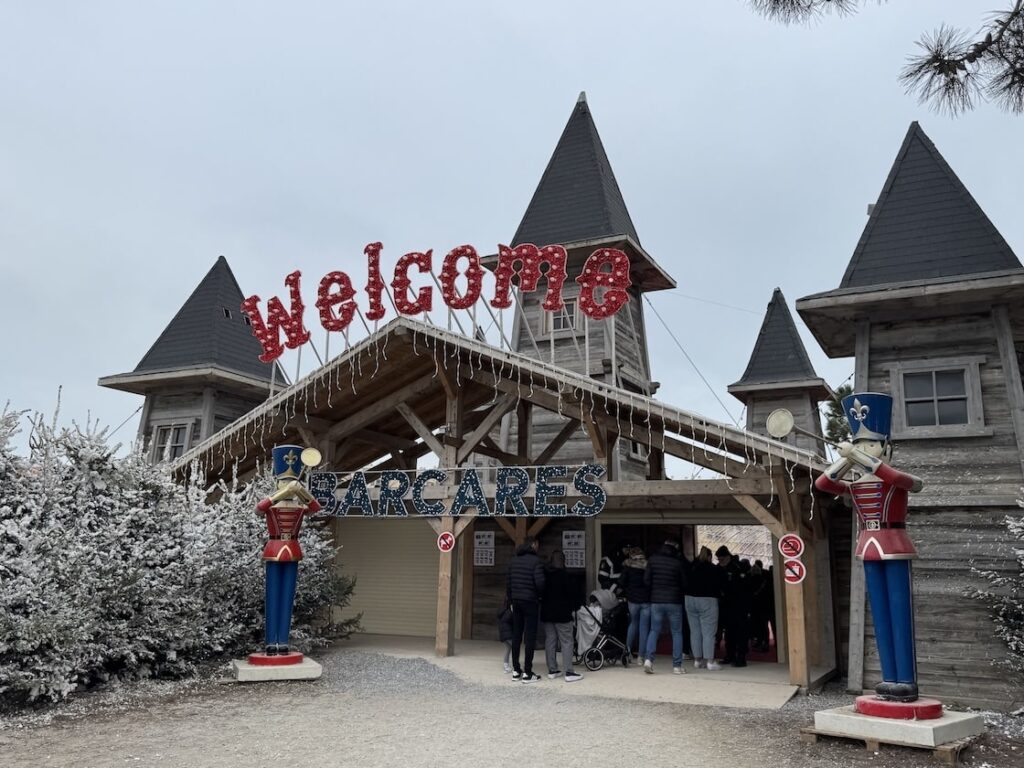
You can’t talk about Christmas in France without mentioning the famous Christmas markets. While many European countries, especially Germany, are well-known for their markets, France definitely holds its own.
Some of the markets are so large they’re called Christmas Villages, or “Village de Noël.” Famous examples include the markets in the village of Le Barcarès in the Aude region and the Strasbourg Christmas Market. These bigger markets draw visitors from all over Europe and beyond.
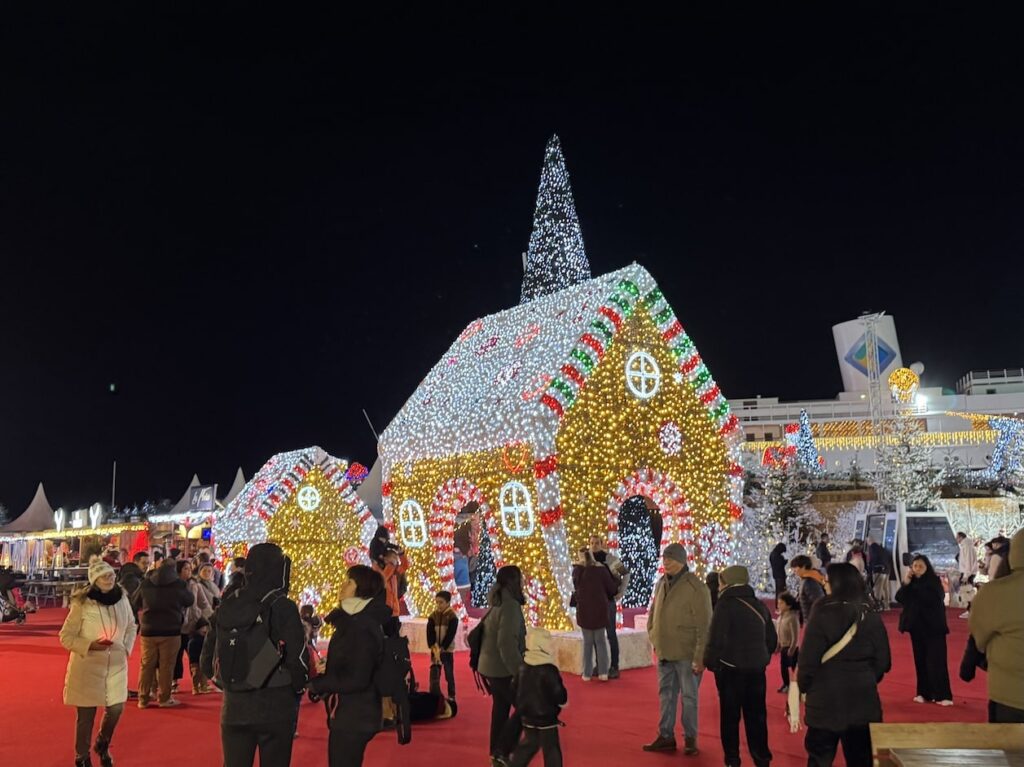
Paris also has several Christmas markets scattered throughout the city. We stumbled upon one not far from Notre Dame Cathedral, and there’s the well-known market on the Champs-Élysées.
In addition, many French cities host their own smaller, local Christmas markets in their town centers. Though more modest in size, these markets are incredibly charming and well worth visiting. Each one has its own unique theme and festive atmosphere that makes exploring them a special experience.
The French Christmas markets are unlike anything I’ve ever seen in the United States. Christmas markets here are few and far between, so even the smallest ones tend to be packed with people.
I believe the U.S. could take some notes from the European tradition and step up their game when it comes to these festive markets. There’s definitely a longing for that kind of holiday atmosphere. From what I’ve seen, people are more than willing to go the extra mile to enjoy such a festive season.
Christmas Lights and Displays
The French really don’t hold back when it comes to Christmas decorations and festivities. It feels like every available inch of space is covered with something festive, which makes you wonder how, and where, they store it all once the season is over.
You’ll find towering displays everywhere, from huge Christmas trees to entire scenes made up of mechanical figurines. “Snow”-covered trees line the villages, making you feel like you’re truly walking through a Winter Wonderland. One of the biggest Christmas tree I’ve ever seen was at one of these markets. The creativity and attention to detail are impressive. In some places, special fabrics are even laid on the floors to create a fully immersive experience, talk about dedication!
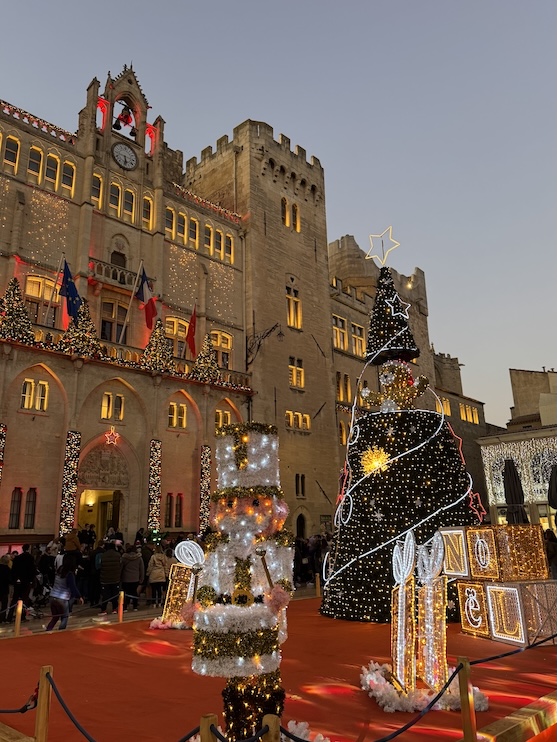

While the markets are beautiful during the day, I highly recommend visiting at night. The atmosphere changes completely and becomes almost surreal. When the lights are on, the festive decorations and intricate details really come to life in a way that daylight just can’t capture. If you prefer fewer crowds, though, daytime visits are a good option.
Some of the most famous Christmas light displays can be found in Paris, especially along the Champs-Élysées. Beautiful lights adorn the city everywhere—from the Eiffel Tower to the Louvre Museum to the department stores. Paris really lives up to its name as the “City of Lights” during the holidays.
Many smaller towns and certain zoos also set up chalets with special light displays during the winter. No matter how big or small the town, you can count on it being decorated for Christmas in some way.
Special Events and Activities
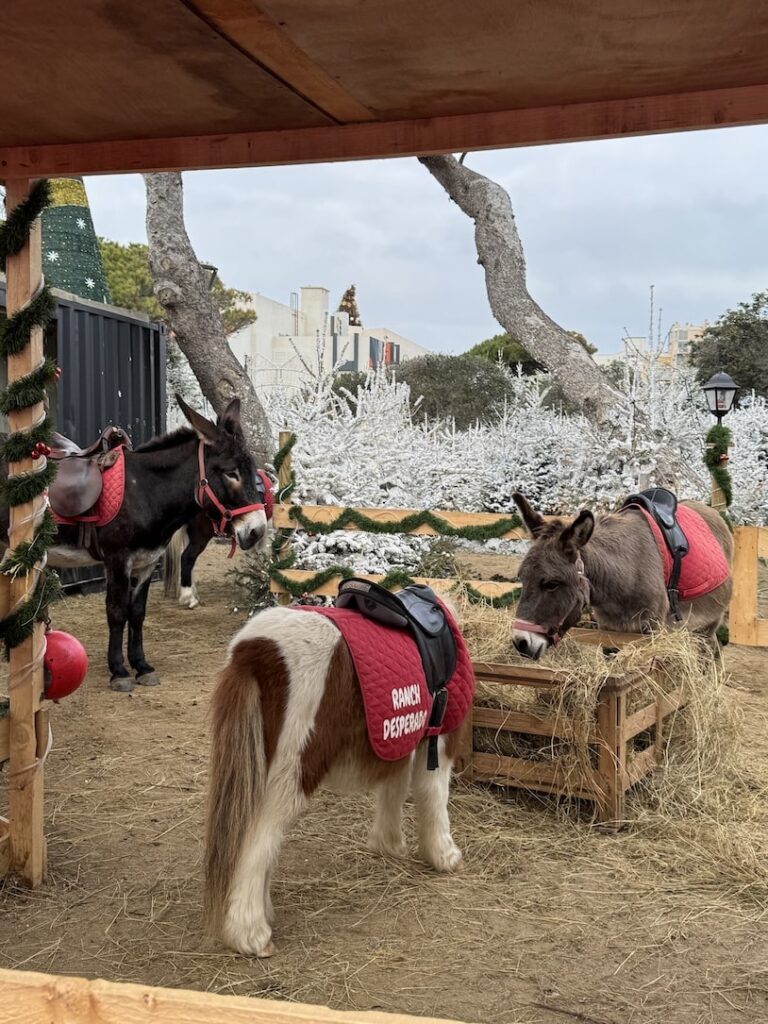
In the days leading up to and following Christmas, markets are packed with activities and special events. One popular spectacle is the scheduled light shows projected onto large buildings, which draw crowds eager to watch the festive displays.
For kids, there are dedicated spaces where they can participate in crafts and activities organized by the city. I’ve also seen characters roaming around, interacting with visitors. Interestingly, some of the most popular characters, though I’m not quite sure how they tie into Christmas, were the Transformers, who were completely surrounded by excited children.
The markets also offer a wide variety of rides and attractions. Older kids can enjoy fast, spinning rides, while younger children have more gentle options to choose from. Sometimes, there is even a large ferris wheel that the entire family can enjoy.One new addition I noticed this year were the virtual reality rides, which seem to be popular with all ages. While kids enjoy the rides themselves, adults often watch the VR screens nearby, taking in the immersive experience.
There are also areas where young children can ride donkeys or ponies through a festive Christmas maze. The animals are quite adorable and make for a charming holiday experience.
Food Stalls
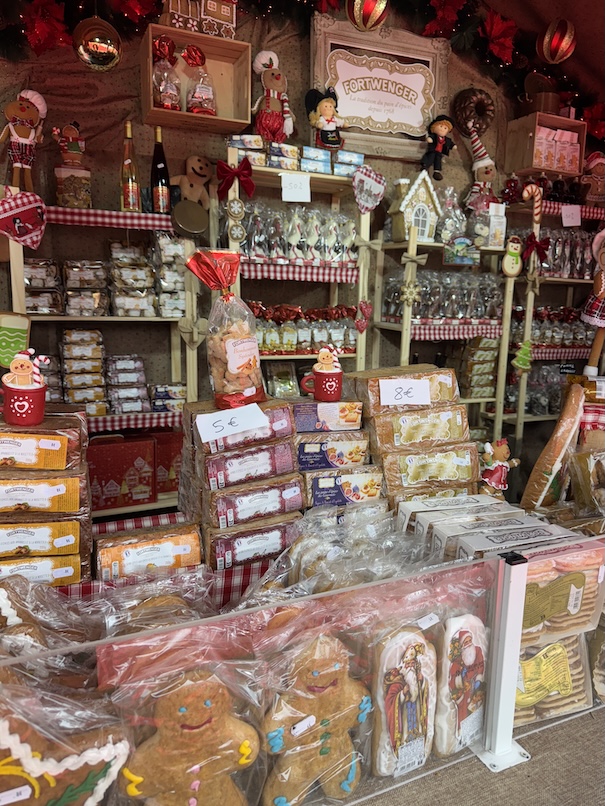
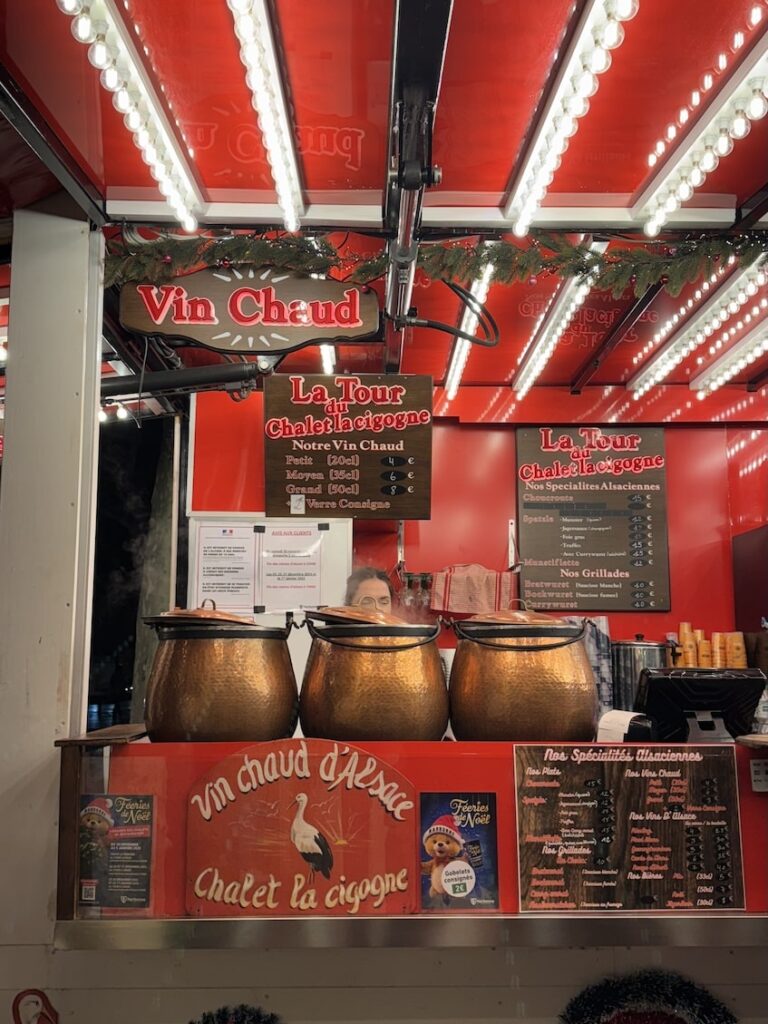
Now for my favorite part about the Christmas markets, the food. Food is such an important part of French culture, and that really shines through in the variety of stalls you’ll find at these markets.
You can find many food vendors serving popular Christmas treats like roasted chestnuts, nougat, pain d’épices, raclette, and foie gras, alongside regional French specialties such as tartiflette.
There are plenty of dining options to choose from. Some stalls offer snacks to grab and eat on the go, like fresh fries cooked in tallow. Others sell full dishes with seating areas scattered throughout the market where you can sit and enjoy your meal. Then there are stalls that operate almost like small restaurants, where you can sit down and have a full meal served to you.
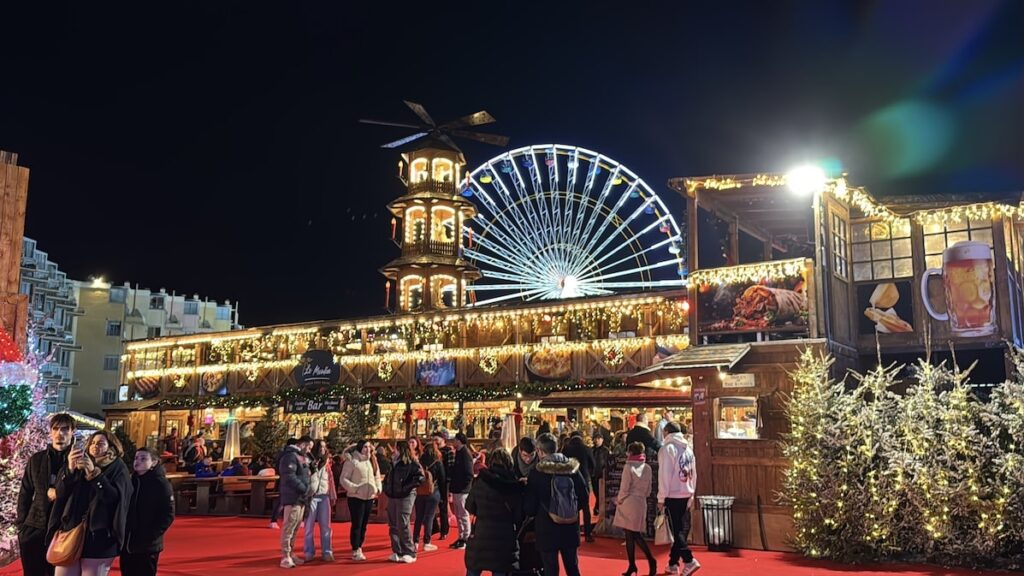
One interesting thing I’ve noticed is the food offered comes from many different regions of France and even from other countries. For example, you might find Alsace flatbreads from the Alsace region, poutine from Quebec, charcuterie from the Auvergne region, and even sauerkraut from Germany.
In addition to these, many markets also feature seasonal specialties like buttery crepes, spiced mulled wine, and sweet treats like gingerbread and candied fruits. This mix of local and international flavors really adds to the festive Christmas spirit and offers something delicious for every palate.
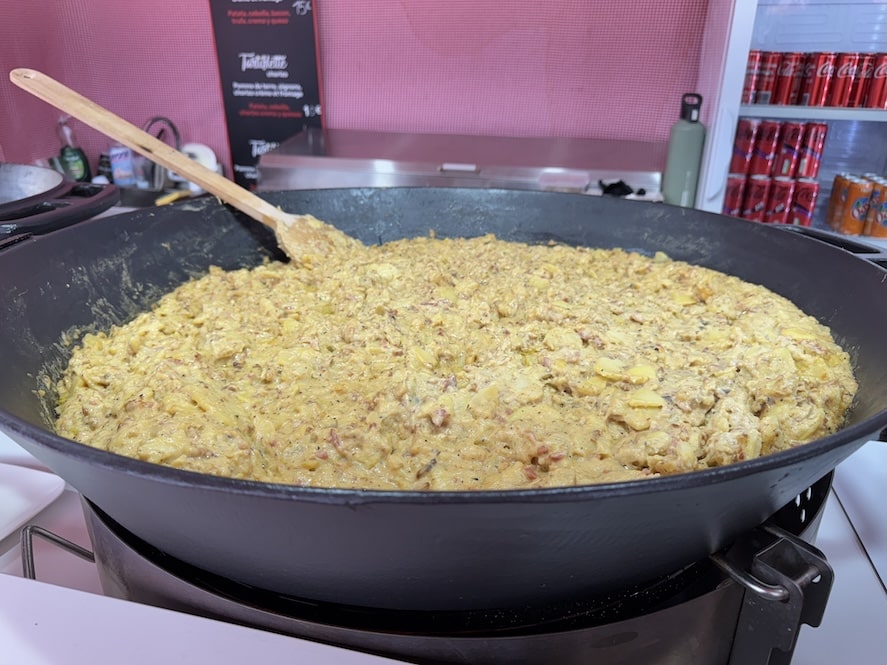
What you won’t miss is seeing many French people walking around, sipping a hot cup of vin chaud, also known as mulled wine. This delicious, spiced wine is served warm and sweet, perfect for the chilly weather. Many vendors offer their own versions, so you can sample different ones and find your favorite.
Artisan Market Stalls
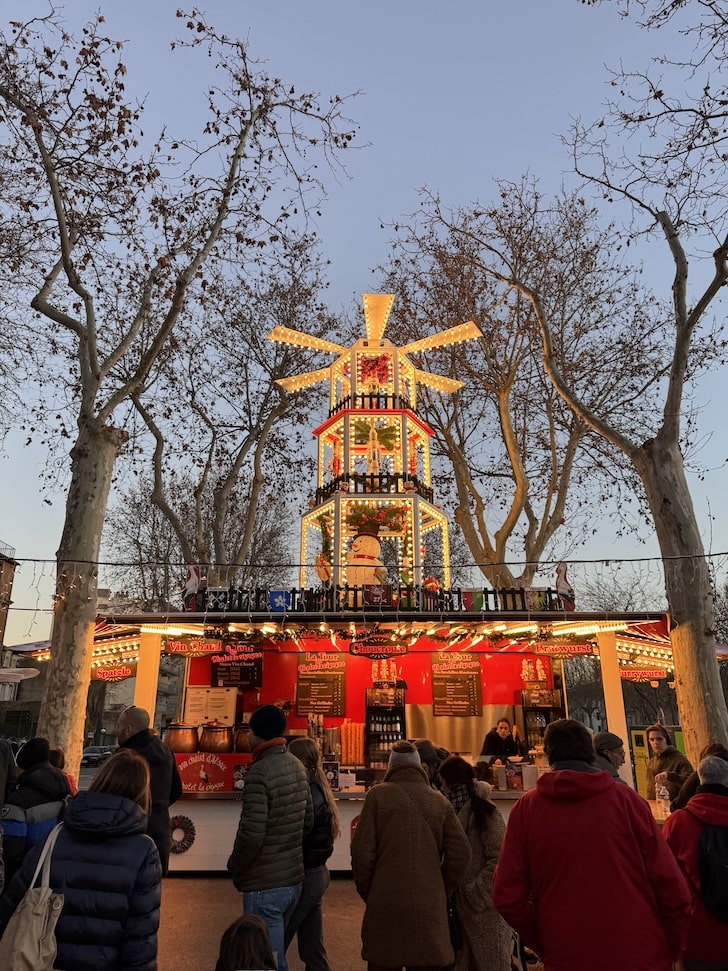
Other stalls at these markets are run by local artisans selling hand-crafted goods or specialty items. You can find everything from merchandise, leather goods, and handmade clothes to home décor and Christmas decorations. These markets make a great place for Christmas shopping or picking up unique souvenirs. You can read all about my suggestions for the best souvenirs to buy from France here.
Santons de Provence
One of our favorite stalls to browse at the Christmas markets are the ones selling Santons de Provence figurines. These are small terracotta figures, individually hand-painted in Provence, France.
The sets typically begin with a nativity scene featuring the Holy Family at the center, and from there, they expand into a detailed village full of everyday characters and scenes.
What I love about this tradition is how fun and creative it can be. Santons de Provence originated during a time when public Nativity scenes were prohibited, so people got creative. They began crafting scenes of a typical Provençal village, one that, incidentally, included the Holy Family in its midst.
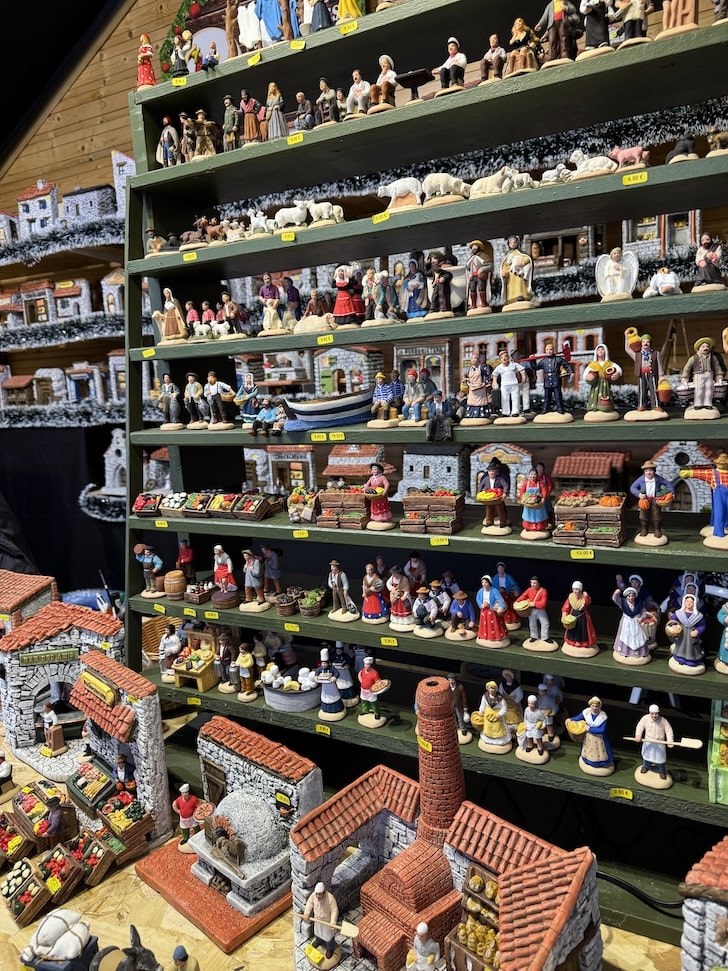
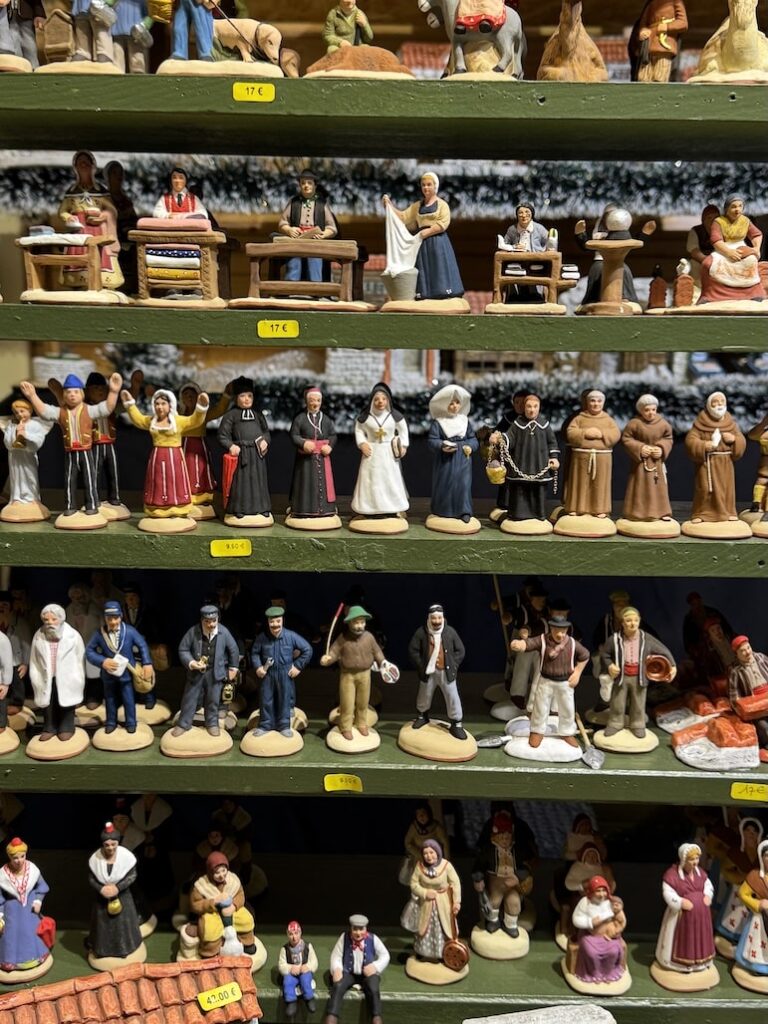
These little villages can get incredibly intricate. Collectors often build out full towns with trees, plants, and all kinds of buildings. Some of the more elaborate sets I’ve seen include bakeries, market places, cheese shops, and even townspeople doing daily tasks.
We especially appreciate how small and portable the figurines are, since we tend to move around a lot. It’s a wonderful way to keep a meaningful Nativity scene with us without taking up much space.
There’s even a special Santons market in the south of France around Christmas, held in Aubagne, that is dedicated entirely to the Santons de Provence. Artisans from across the Provence region gather to sell their handcrafted pieces. We haven’t made it there yet, but it’s definitely on our list.
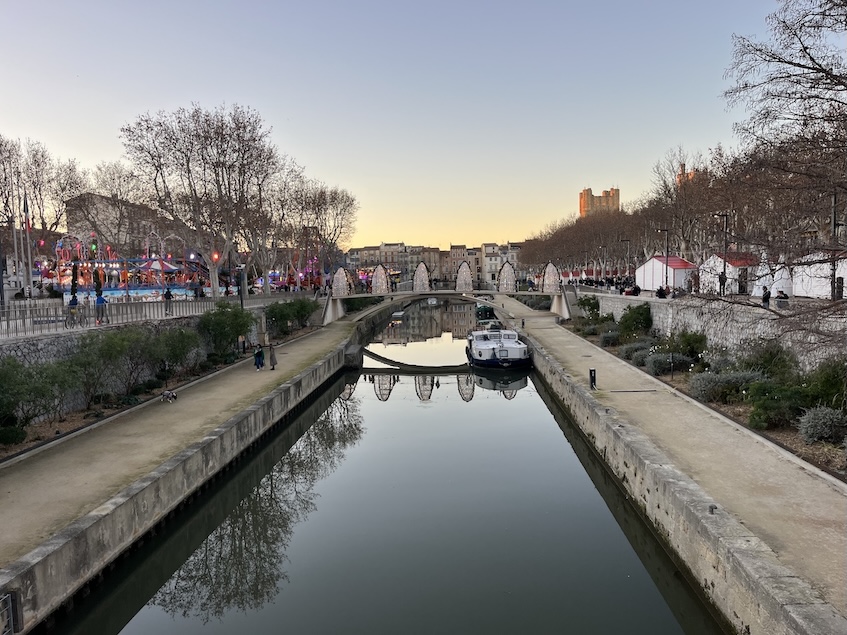
Visiting France during Christmas time is one of my absolute favorite times of the year. It’s just as magical and beautiful as it looks in the pictures, if not more.
I hope this post helps you feel more prepared for your trip to France at Christmas. It truly is a unique and worthwhile experience, full of charm, tradition, and festive spirit. You’re sure to have a wonderful time and be completely immersed in the joy of Christmas.
Yours in Christ,
A & D
